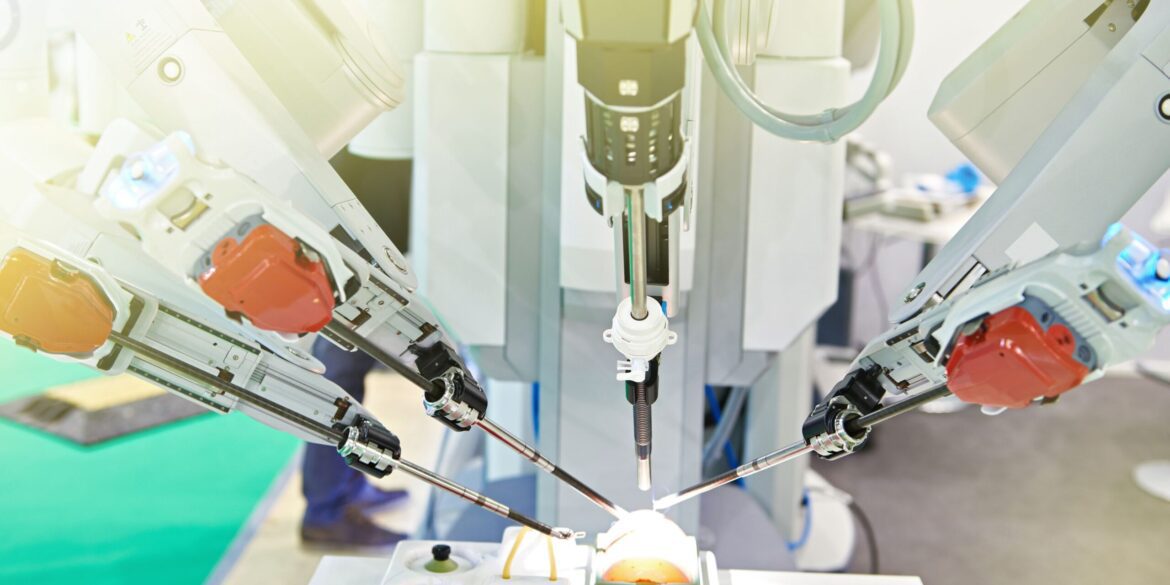The role of medical robotics in transforming healthcare is becoming more apparent, with the National Institutes of Health (NIH) spotlighting these technological advancements. From surgical procedures to diagnostics and patient monitoring, robotics is enhancing the precision, efficiency, and outcomes of care. As medical robotics continues to evolve, it holds the potential to revolutionize healthcare delivery and improve patient experiences across the globe.
Revolutionizing Surgical Procedures
Medical robots are making a significant impact in the field of surgery, particularly in minimally invasive procedures. Robotic surgical systems, such as the da Vinci Surgical System, allow surgeons to perform complex operations with greater accuracy and precision. These systems enhance the surgeon’s capabilities by providing magnified 3D views of the surgical site, which are often more detailed than what the human eye can detect. This improved visibility, along with greater dexterity, reduces the likelihood of human error during procedures.
By utilizing smaller incisions, robotic surgery reduces the trauma to surrounding tissues, leading to quicker recovery times, reduced scarring, and less postoperative pain. For patients, this means shorter hospital stays and a faster return to daily activities. Furthermore, robotic systems can be used in a variety of surgical specialties, from urology and cardiology to orthopedic procedures, making them an invaluable tool in modern medicine.
Transforming Diagnostics
Medical robotics is also reshaping the diagnostic landscape. Robots, especially those powered by artificial intelligence (AI), are being used to analyze medical images with exceptional speed and accuracy. This technology has proven invaluable in radiology, where AI algorithms can quickly scan X-rays, MRIs, and CT scans for signs of disease. These robotic systems can often detect issues earlier than human radiologists, providing critical insights that might otherwise go unnoticed.
The ability to identify abnormalities such as tumors, fractures, or organ dysfunction in real time allows for quicker decision-making and more timely treatments. For patients, this means less waiting and more accurate diagnoses, which can improve the effectiveness of treatment plans. Additionally, AI-based diagnostic robots reduce the strain on healthcare professionals, allowing them to focus on more complex tasks while ensuring that routine screenings and analyses are completed swiftly and accurately.
Enhancing Patient Monitoring
Patient monitoring is another area where medical robotics is proving essential. Automated robotic systems are increasingly used to track vital signs, administer medication, and support physical therapy. In intensive care units (ICUs), robots are particularly valuable for continuous patient monitoring. These robots can measure a patient’s heart rate, blood pressure, oxygen levels, and other vital signs around the clock, ensuring that any changes in a patient’s condition are detected immediately.
Moreover, robots are being integrated into home healthcare, where they help monitor patients outside of a hospital setting. These robots can assist with medication management, offer virtual consultations, and even remind patients to perform specific tasks such as taking medication or engaging in physical exercises. By offering consistent and automated care, these robots help to ensure that patients adhere to treatment plans, leading to better health outcomes.
The Future of Medical Robotics
The future of medical robotics is incredibly promising, with continued advancements in AI, machine learning, and sensor technologies. Researchers are working on enhancing the capabilities of these systems, enabling them to perform even more complex procedures with minimal human intervention. One area of interest is the integration of robotics with telemedicine, which could allow for remote surgeries and consultations, making healthcare more accessible in underserved or rural areas.
Additionally, as the technology progresses, there is a growing focus on personalizing healthcare through robotics. For instance, robots may soon be able to tailor treatments based on an individual’s genetic profile or specific health conditions. This could lead to more targeted, effective treatments and better outcomes for patients.
Furthermore, as robotic systems become more autonomous and interconnected, they may reduce the burden on healthcare professionals, allowing them to focus more on patient care and decision-making rather than routine tasks. As medical robotics continue to advance, it is expected that these systems will become integral to everyday healthcare operations, both in hospitals and in patients’ homes.
Conclusion
Medical robotics is quickly becoming a transformative force in healthcare, with the potential to significantly enhance the precision, efficiency, and outcomes of patient care. By improving surgical procedures, transforming diagnostics, and enhancing patient monitoring, robots are already making a profound impact. Looking ahead, as technology continues to evolve, the integration of robotics into healthcare promises even greater advancements, ultimately leading to more personalized, accessible, and effective care for patients worldwide. With ongoing research and development, the future of medical robotics is bright, and it will likely play a pivotal role in shaping the future of medicine.

